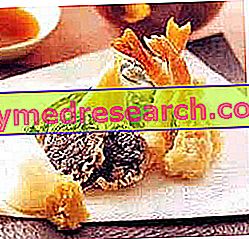
Scientific name
Commiphora molmol
Family
Burseraceae
Origin
Somalia, Sudan, Yemen
Synonyms
Myrrh
Used Parts
As a drug, the acrid-smelling resin is used, collected in granules and small brown masses (Official Pharmacopoeia)
Chemical constituents
- Essential oil;
- sesquiterpenes;
- Ketones;
- sterols;
- Polysaccharides.
Myrrh in Herbalist: Property of Myrrh
In the past, the resin obtained from the plant was used orally as a carminative, expectorant, digestive and urinary disinfectant; however, these uses are now abandoned due to a lack of data on the safety of myrrh use.
The plant was also used as a room fragrance, as an insecticide, or even during funeral ceremonies for embalming.
Myrrh tincture is a specific remedy (for external use) for gingivitis, pyorrhea, canker sores, stomatitis and tonsillitis; it can also be used for dressing abrasions, wounds, skin ulcers, boils and acne.
Biological activity
Many properties are attributed to myrrh: antimicrobial, astringent, carminative, expectorant, vulnerary and anticatarrali. However, its only use to be officially approved is the external one for the treatment of inflammation of the oropharyngeal cavity.
In fact, myrrh essential oil has been shown to possess local astringent and disinfectant activities, as well as being able to promote the formation of granulation tissue, one of the first stages of wound repair and healing.
Moreover, the hypoglycemic activity was investigated from myrrh. In fact, a study conducted on animals has shown that myrrh extract is able to exert hypoglycemic action both in diabetic animals and in animals unaffected by the disease.
Another study, carried out on diabetic rats, showed that myrrh extract is able to exert its hypoglycaemic effect through the reduction of blood glucose levels, the increase in insulin secretion and the increase in the content of glycogen in the liver.
However, despite the results obtained, before being able to approve similar therapeutic applications of myrrh, it is necessary to carry out further and more in-depth studies.
Myrrh against inflammation of the oropharyngeal cavity
As mentioned, thanks to the antimicrobial action, astringent and promoter of the formation of granulation tissue carried out by the essential oil contained in myrrh, the plant - or better, the resin obtained from it - can be used externally as a valid remedy in combating inflammation of the oropharyngeal cavity (sore throat, toothache, stomatitis etc.).
For the treatment of the aforementioned diseases, myrrh is usually used as a dye (ratio drug / solvent 1: 5, using ethanol 90% V / V as extraction solvent), to be diluted in water and then rinsed and gargle.
As an indication, to prepare a solution for rinses, it is recommended to dilute 5-10 drops of dye inside a glass of water. If, instead, you want to prepare a solution for gargling, generally, it is advisable to dilute 30-60 drops of product always in a glass of water.
Myrrh in folk medicine and homeopathy
In folk medicine, myrrh is used internally as a carminative and expectorant remedy, as well as being used to promote appetite and to fight intestinal infections.
In Chinese medicine, on the other hand, myrrh is used as a remedy for boils, wounds, amenorrhea and even as a remedy for carbuncle (anthrax) and abdominal tumors.
In Indian medicine, myrrh is used to counteract inflammations of the skin and mouth, ulcers and wounds; as well as being used as a remedy for menstrual disorders and gastric disorders.
As far as homeopathic medicine is concerned, however, at the moment myrrh has not found any kind of application in this area.
Contraindications
Avoid the use of myrrh in the case of gastritis, metrorrhagia, hypersensitivity to one or more components.
Furthermore, the use of myrrh is also contraindicated in pregnancy and during lactation.
Side effects
After use, nausea, vomiting, diarrhea, tachycardia and possible allergic reactions may occur.
Pharmacological Interactions
- oral antidiabetics



